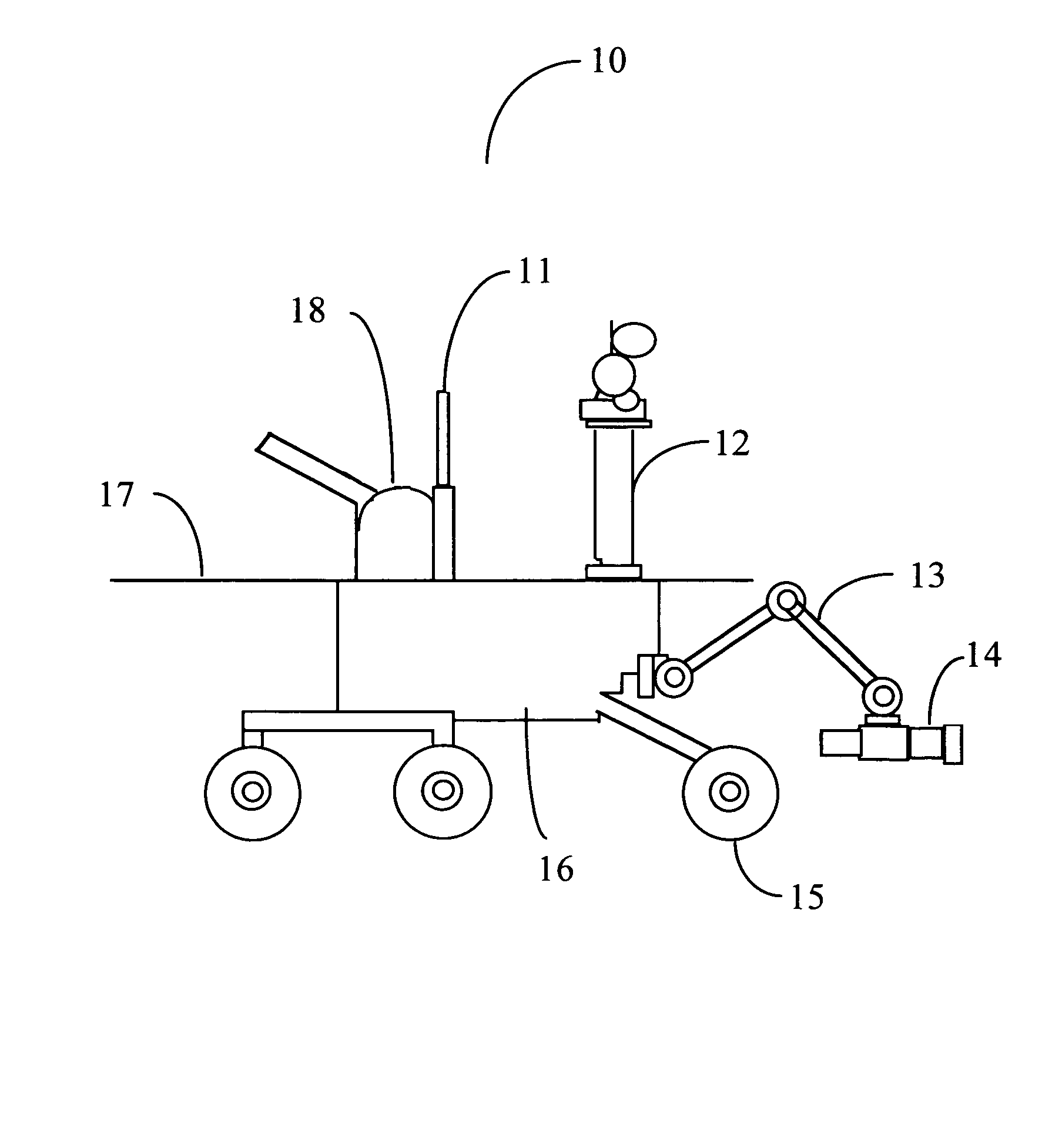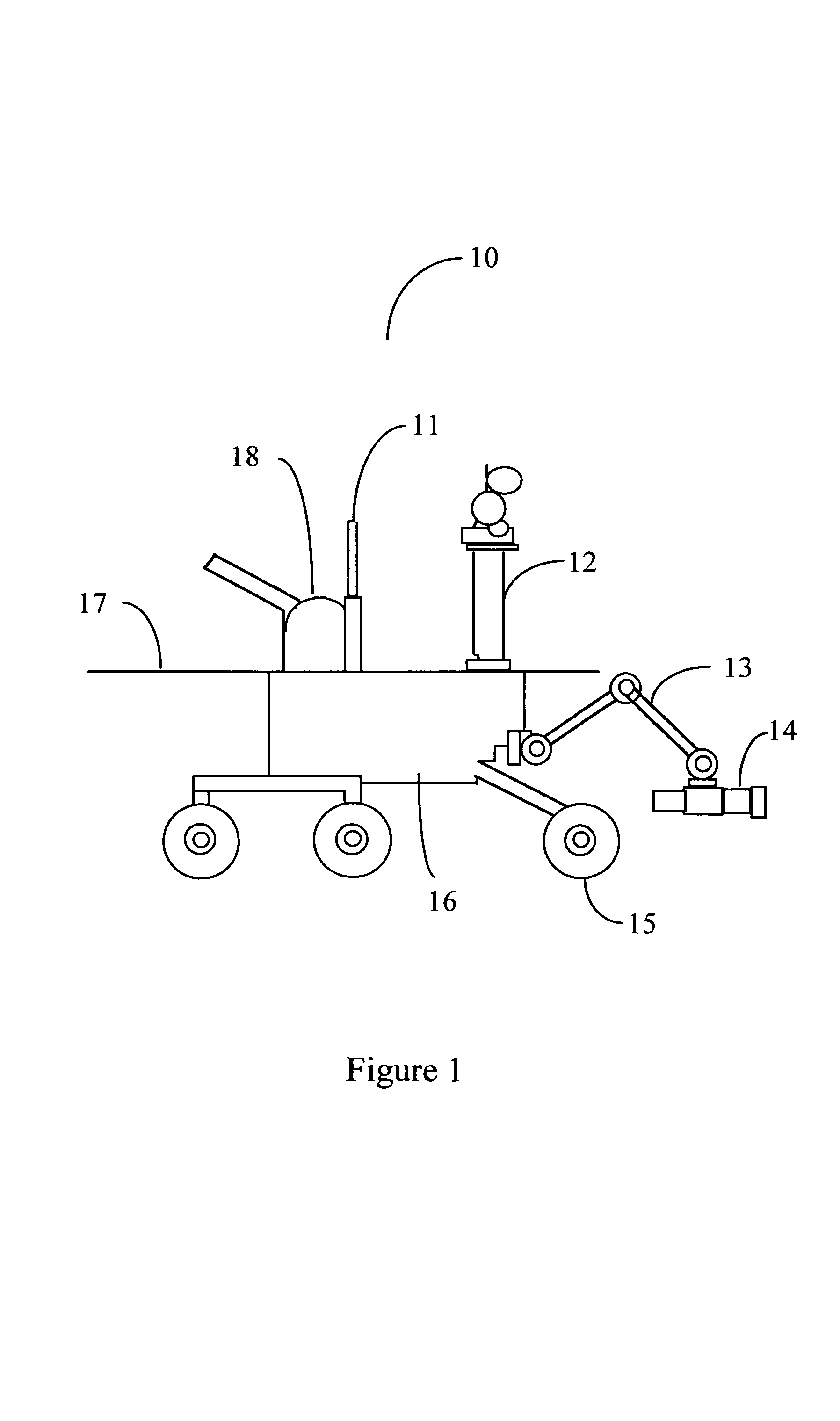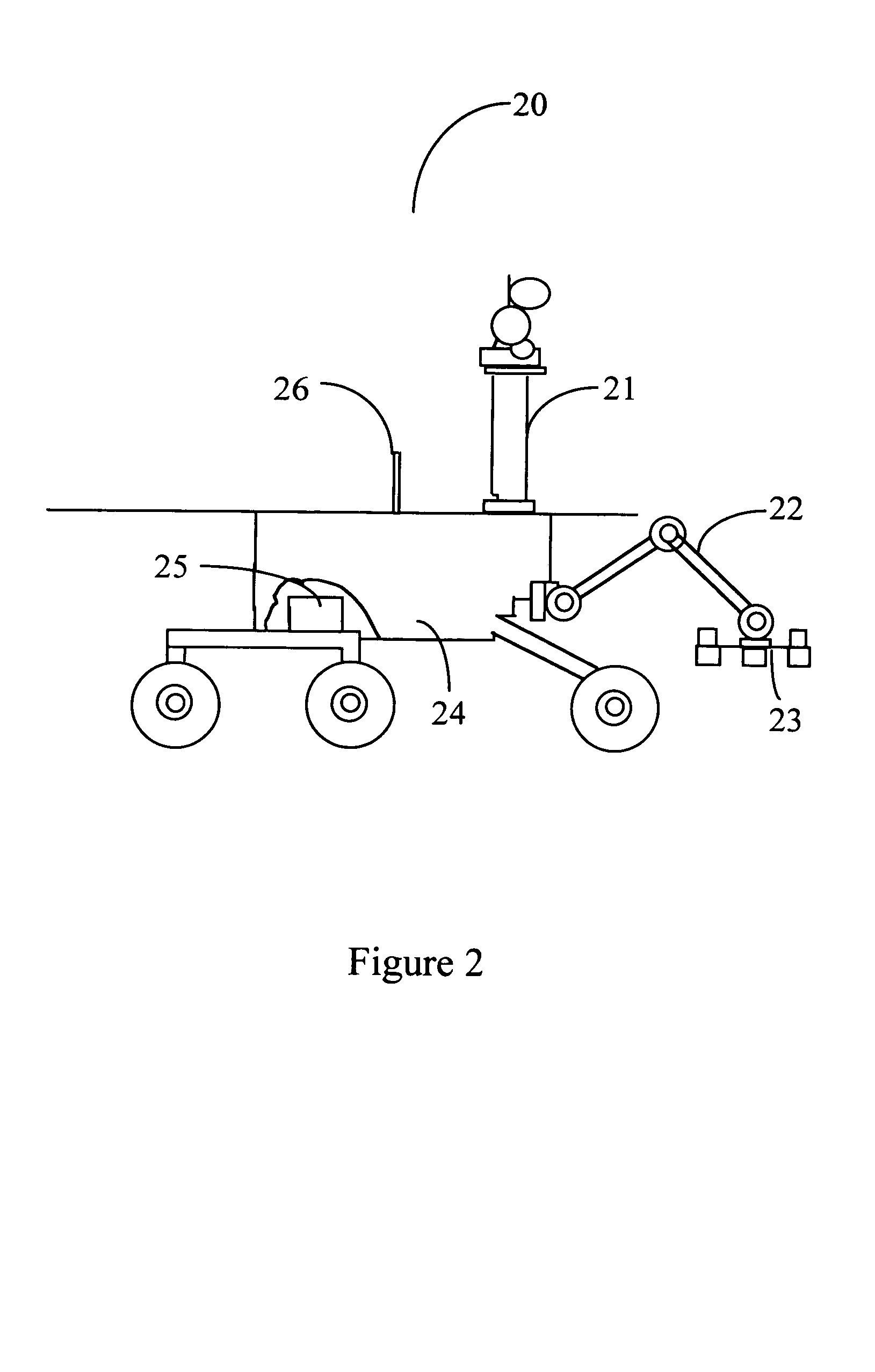Means to prospect for water ice on heavenly bodies
a technology for heavenly bodies and water ice, applied in the field of space exploration, can solve the problems of lowering power production, robotic arm shoulder, and no earlier moon landers were equipped with water or water ice detection equipmen
- Summary
- Abstract
- Description
- Claims
- Application Information
AI Technical Summary
Benefits of technology
Problems solved by technology
Method used
Image
Examples
second embodiment
[0080]A second embodiment for the electrodes is depicted in FIG. 4, 40. FIG. 4, 40, is a drawing that shows segmented cylindrical electrodes between which the test sample is located. A top view 41, a side view 42 showing the gap 43 between facing electrodes, and a second side view 44, rotated ninety degrees from that of 42, are provided. A different embodiment of the cylindrical electrodes is drawn in FIG. 5, 50, for the case where the electrodes are made a permanent part of the interior surface of the cylindrical bit that cuts the depressions with the bit with inner electrodes left in place for the test measurement. FIG. 5, 50 is a drawing that provides a top view 51, a side view 52 and a second side view 57 rotated ninety degrees from that of 52. This version of the segmented cylindrical electrodes has a larger height to diameter ratio then that shown for the electrodes in FIG. 4, 40. The extra vertical height is broken up into two pieces: the basic non-metallic drill 53 which is ...
third embodiment
[0081]A third embodiment for the electrodes, bullseye electrodes, is drawn in FIG. 6, 60. FIG. 6, 60, illustrates the bullseye electrodes by showing a top view of the exterior annular ring electrode 61 and the center disk electrode 62 along with the flat aspect shape of the bullseye electrodes illustrated by a side view drawing of the electrodes 63. This embodiment of the electrodes is placed against the surface of the potential water ice sample to conduct a test measurement rather than being placed into depressions as done with the other electrode embodiments. The preferred embodiment for the electrode configuration is the initial one described above and labeled as “capacitor like” electrodes because of its well known impedance measuring characteristics.
[0082]The water ice detection electrodes and site preparation tools are mounted on the water ice detector cross. In one embodiment, the site preparation tools include a scraper, FIG. 7 or FIG. 8, to remove overlying material that co...
PUM
 Login to View More
Login to View More Abstract
Description
Claims
Application Information
 Login to View More
Login to View More - R&D
- Intellectual Property
- Life Sciences
- Materials
- Tech Scout
- Unparalleled Data Quality
- Higher Quality Content
- 60% Fewer Hallucinations
Browse by: Latest US Patents, China's latest patents, Technical Efficacy Thesaurus, Application Domain, Technology Topic, Popular Technical Reports.
© 2025 PatSnap. All rights reserved.Legal|Privacy policy|Modern Slavery Act Transparency Statement|Sitemap|About US| Contact US: help@patsnap.com



